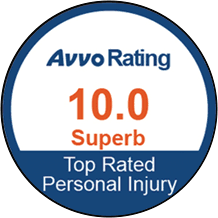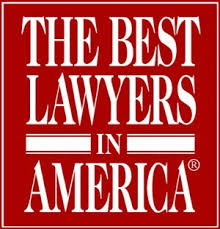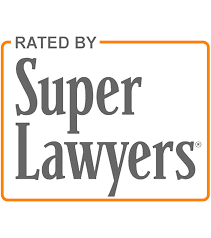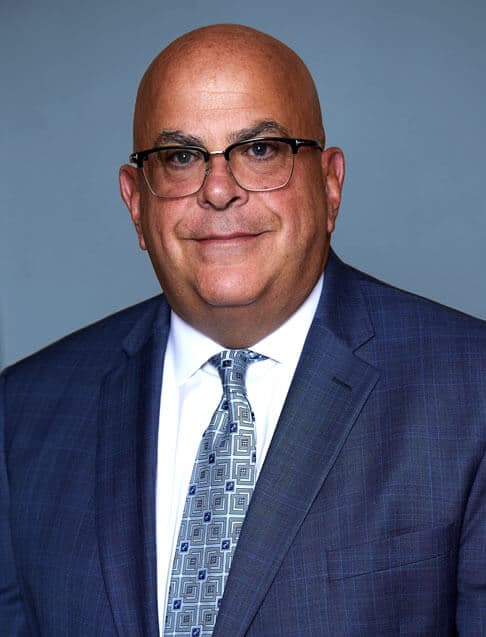At Queller, Fisher, Washor, Fuchs & Kool and The Law Office Of William A. Gallina, LLP, our premises liability lawyers in New York are experienced in protecting the rights of clients who have been seriously injured, as well as the families of those killed on business, public or private property.
Business owners, landlords, private property owners and even state and municipal owners of everything from government buildings to park lands have a duty to provide a safe and secure environment for guests; when they do not, innocent visitors can be seriously injured or killed. Those injured and the families of those killed have a right to be compensated for medical bills, pain and suffering, lost wages, disability and other issues arising from the accident.
Schedule a Free Case Evaluation
What Types Of Premises Liability Cases Do You Handle?
Our premises liability lawyers represent people seriously injured or killed in a wide range of premises liability accidents, including:
Slip & Fall Accidents
Electrocution Accidents
Lead Poisoning
Negligent Security
Property Owner Negligence
Restaurant & Store Accidents
Elevator & Escalator Accidents
Common Legal Issues In Premises Liability Cases
In most New York State premises liability cases that occur on the property of a landowner, homeowner, lessor, lessee (tenant) or involve a person or entity that controls safety at a location, there are certain common legal issues that arise which may be crucial to proving liability against the potentially negligent party (also known as the "tortfeasor").
The first issue involves control of the property, and whether the potential defendant in a personal injury lawsuit had the ability and/or presence at the site to have the knowledge and/or opportunity to be aware of the problem or defect that caused injury. By proving that a defendant did have knowledge or the opportunity to be aware of the problem or defect, it becomes clear that the defendant had the opportunity to fix the problem.

The issue of "control" of the property typically arises when the landowner denies they are at fault by claiming that they gave full possession of the property to the lessee/tenant, and thus had no legal responsibility. They typically argue that they lacked responsibility because they had no knowledge or control of any conditions on the property. When a property owner makes such a claim, it is essential for your premises liability lawyer in New York to test the validity of such claim. Testing the validity of a property owner's claims becomes especially important in instances when the property owner may have adequate insurance to cover a loss for serious personal injury or death, while the tenant of the property may have little to no insurance at all.
The answer to the question of whether the owner or lessor of the property may be legally liable for damages in the aforementioned situation may hinge on the quality of the representation afforded by an injured party's attorney, especially in regard to challenging the owner's claim that they were "out of possession" and thus not responsible for the accident. It is very important in such situations to carefully find out the extent of not only the owner's involvement with the rented property, but the involvement of any of the owner's employees, agents and servants; this includes superintendents, handymen, rent collectors or anyone else that had access to the premises through the owner. One must also find out who had a key to the premises and under what circumstances they were permitted to unilaterally, or with permission, enter the premises.
In this regard, our premises liability lawyers in New York perform full-scale investigations in order to uncover all potential employees that may have had access to the premises. During the course of litigation of premises liability cases, we routinely depose each person in order to find out the involvement and/or presence that the owner or his employees and agents had at the property.
What Is The Issue Of “Notice” In A Personal Injury Case?
The level of the involvement or presence of an entity or person at a location where a serious injury has occurred relates to the issue of "notice." Notice is a legal concept which says that a party will not be liable or found negligent for an injury unless they "knew or should have known" of the defective or dangerous condition that caused the injury. Alternatively, a party might be found negligent if they created the defective or dangerous condition that led to the accident or injury; however, in this case, the issue of notice is not relevant because liability derives from the affirmative negligence of the tortfeasor or negligent party.
An owner will often give the excuse that they were out of possession and never present, claiming that they gave full possession to a tenant, so that they can claim that they did not know nor could they have known about the defective or dangerous condition that caused injury.
Showing that the responsible entity actually was aware of the dangerous condition can be crucial in a personal injury or death case. This is known as "actual notice" and demonstrating it goes a long way toward proving liability.

Absent actual notice, what is known as "constructive notice" may also be sufficient to prove liability. Constructive notice is most often proven by presenting evidence that the dangerous condition was present for a prolonged period of time, or at least for a long enough time that, in the exercise of reasonable care, the responsible party knew or should have known of the condition and thus done something to correct it. Proving that a responsible party had actual or constructive notice often involves obtaining the testimony of eyewitnesses who have knowledge, through their observations, of conditions that existed. These observations could involve transient conditions such as the presence of snow or ice, or the presence of a slippery substance, such as on a stairwell or in the aisle of a grocery store. If the witness can attest to the presence of the dangerous condition for a period of time within which it should have been cured, then liability may attach to the responsible party. In some cases, the nature of the condition itself may be evidence of how long it was present (such as the buildup of a large amount of dirt or debris). On the other hand, if for example one slips on water on a stairwell, with no evidence of how long the water or liquid was present, then proving notice may be impossible. For instance, in the case where another tenant spilled some water only moments before it caused an accident, without presenting the landlord with the opportunity to remedy the dangerous condition, liability will likely not attach to the landlord due to the absence of notice.
The aforementioned example of constructive notice highlights the fact that having an accident and sustaining an injury does not automatically entitle one to compensation. Proof of negligence, which is the failure to exercise reasonable care, is essential to obtaining compensation in a lawsuit. The law in New York State places the burden of proof upon the plaintiff (the injured party) to prove that it is more likely than not that the defendant was negligent. Another more technical way to describe this burden of proof is to say that the plaintiff must prove his or her case based on a preponderance of the evidence in favor of the plaintiff. If from the evidence there is no inference or preponderance one way or another, the plaintiff has not met his or her burden. Proving liability in a civil personal injury case involves, at a minimum, tipping the scales ever so slightly in favor of the proof set forth by the plaintiff. Proving notice is crucial to meeting this burden of proof in any type of premises liability accident.
Our Premises Liability Lawyers Retain Leading Professionals To Help Build A Winning Case
At times, notice of a defective or negligent condition cannot be proven through ordinary or what is known as "lay" witnesses. This could be due to happenstance or because a dangerous condition is not open or obvious to be noticed by a mere passerby. Often, the issue of notice must be proven through the opinions of professionals. For example, our premises liability lawyers in New York have retained a vast array of knowledge in different fields to show that a defendant in a premises liability lawsuit should have, in the exercise of ordinary care, known of a defective condition. The lack of such knowledge or awareness often derives from a failure to adequately maintain one's property. Indeed, homeowners, business owners, tenants and landowners often forego much needed maintenance and repairs in order to increase profits, at the expense of persons who are seriously or catastrophically injured (or even killed). Some examples of the types of professionals who have been retained by our premises liability lawyers include the following:
- Retention of an electrician or electrical engineer to prove liability in wrongful death cases where our clients have been killed by electrocution.
- Retention of safety professionals for playground accidents, as well as many other types of incidents involving children.
- Hiring engineers to prove lack of maintenance or poor design in accidents involving falling objects or collapsed ceilings/roofs that lead to injury.
- Hiring of door safety inspectors in cases involving defective doors that cause serious injury.
- Utilization of professionals to examine and opine on the condition and maintenance of floors, stairways (including analysis of step width, step treads, etc.), handrails and bannisters, including but not limited to doing safety tests and giving opinions on whether conditions complied with applicable codes.
These examples represent only a small fraction of the types of professionals we employ for the premises accident cases we handle; this aspect of our representation is part of the all-important common thread of proving notice of the defective or dangerous condition that caused your injury. Performing a complete and thorough investigation, deposing all witnesses with knowledge and hiring the appropriate witnesses can be equally important and essential to your representation. Your premises liability lawyer should have specific and thorough knowledge in these areas in order to properly represent your interests and to prove that a responsible party who unjustly denies responsibility was negligent because they knew or should have known of the dangerous condition that caused your accident.
What Are The Most Common Premises Liability Injuries?
The most common injuries caused by premises liability accidents are fractures of bones that require surgery – known as “open reduction with internal fixation.” This means that the bones are so badly fractured that in order to reduce the fracture, major “open” surgery needs to be performed under general anesthesia; the fracture is then treated via the placement and insertion of hardware. The hardware may include material such as metal rods, plates and screws in order to help enable the fracture to heal. Often, the hardware will remain in the victim’s body for the rest of that person’s life. Alternatively, other major surgery is often needed in circumstances where the hardware can and should be removed. Such injuries often involve “articular” fractures, which is another way of saying that the fracture occurred at a joint (ankle, knee, elbow, wrist, etc.). Articular injuries are notorious for leading to long-term pain and discomfort – particularly from post-traumatic arthritis. More serious injuries, including traumatic brain injuries and death, also may result from a slip and fall or trip and fall accident.
Does Your Premises Liability Injury Entitle You To Compensation?
Not all individuals who have suffered an injury on another person's property have a valid premises liability lawsuit. In order to have a valid case, the victim must be able to prove at least one of the following:
- The property owner caused or created the hazardous area, leading to the plaintiff's injury.
- The property owner knew or was informed of the hazardous area.
- The property owner had constructive notice. Constructive notice means the property owner should have known about the hazardous area because it was prominent and existed for a long enough time that a reasonable person would have noticed and had time to make the appropriate repairs.

Your premises liability lawyer in New York must also be able to prove that the property owner's negligence was directly responsible for the victim’s injury. In other words, the property owner's negligence does not necessarily constitute liability. For instance, if the property owner neglected part of their premises, but the victim suffered an injury on another part of the property that was not hazardous, then the victim does not have a valid lawsuit because negligence was not the direct cause of their injury.
The injury must have also forced the victim to suffer either economic or non-economic damages. Economic damages refer to any monetary harm the victim may have suffered due to their injury. Lost wages not covered by workers' compensation and high medical bills not covered by insurance are both examples of economic damages. Non-economic damages are long-term physical and emotional stress that the victim suffered due to their injury.
Injured Individuals Should Be Aware Of The Statute Of Limitations For Premises Liability Cases
Typically, the statute of limitations for filing a premises liability lawsuit is 3 years from the date of the injury. There are some instances, however, where the statute of limitations may vary. For instance, if a victim is under 18 when their injury occurs, the statute of limitations would not even start until their 18th birthday. As a result, the statute of limitations for minors would expire on their 21st birthday. Furthermore, the statute of limitations can vary if the victim plans to sue a municipality or the State of New York.
Due to the statute of limitations, individuals who have suffered injuries in a premises liability accident should not hesitate to contact one of our premises liability lawyers in New York. Failure to file a claim before the statute of limitations expires can forever forbid victims from receiving the compensation they may deserve.
Our Notable Verdicts & Settlements In Premises Liability Cases
Our premises liability lawyers in New York have recovered millions of dollars for our clients. Some of our more notable verdicts and settlements include:
How Do I Schedule A Consultation With Your Premises Liability Lawyers In New York?

If you or someone you love has suffered an injury due to a premises liability accident, you may be entitled to compensation. For a free consultation with our premises liability lawyers in New York, call us at 212-406-1700 or contact us online. We will review your case and discuss your legal options with you. The attorneys at Queller, Fisher, Washor, Fuchs & Kool and The Law Office Of William A. Gallina, LLP take all cases on a contingency fee basis, meaning our services are free of charge unless there is a monetary recovery. Our law firm is proud to serve the New York City area, including the Bronx, Brooklyn, Manhattan, Queens and Staten Island, as well as the surrounding counties and New Jersey. We offer legal services in English, Spanish, Portuguese, and Chinese.